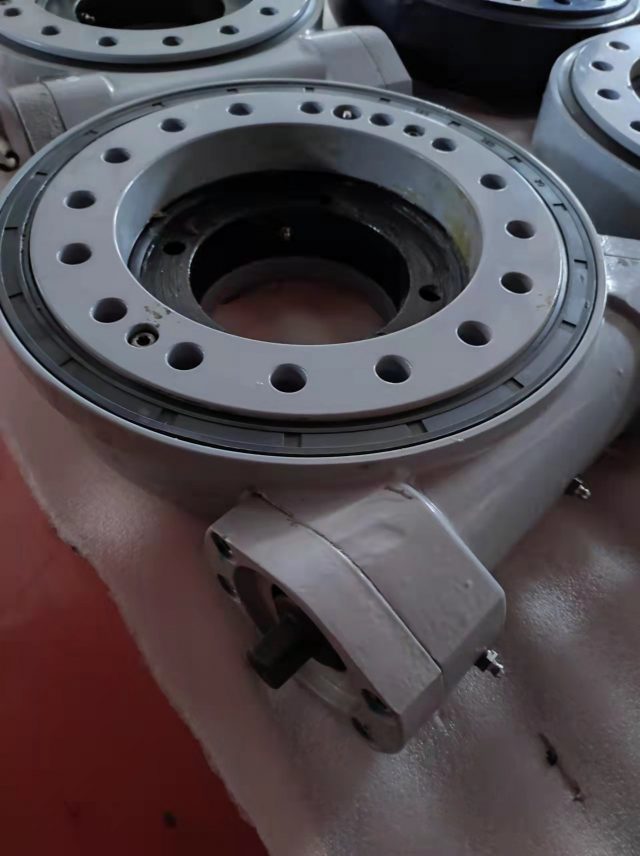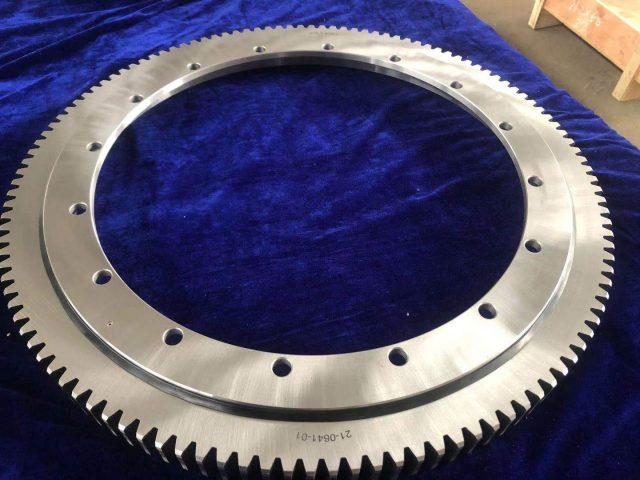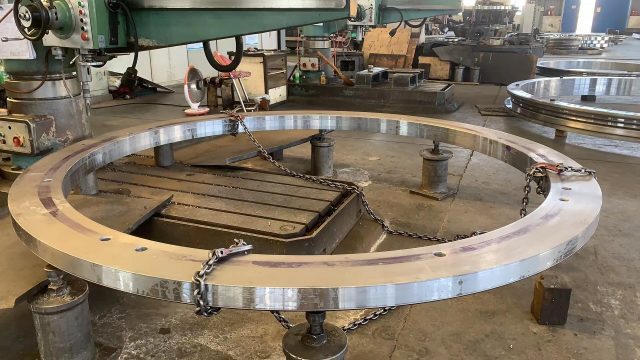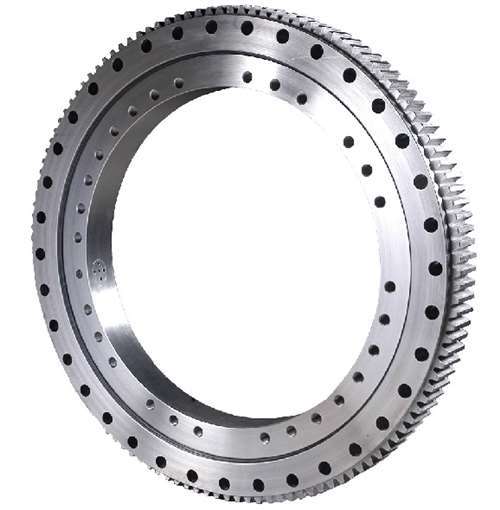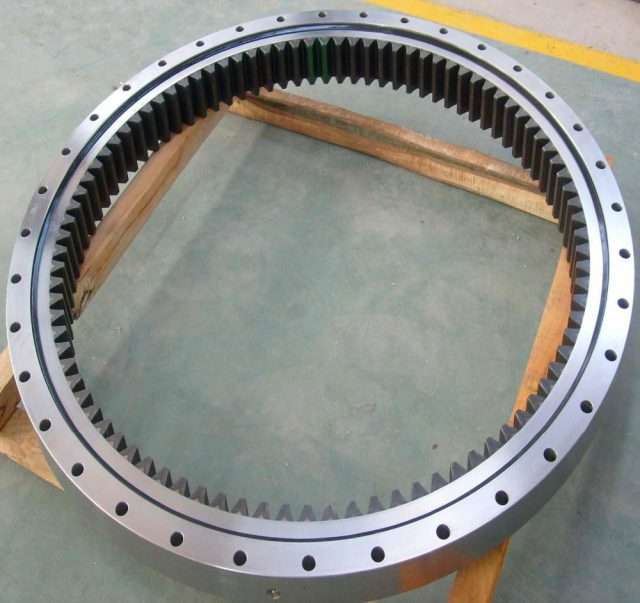high precision roller slewing rings factory
1.Selection and use of slewing ring of pile extractor
A pile puller is a pile machine that uses vibration, static force or hammering to pull the pile out of the ground. Pile pulling operations often use the corresponding vibratory pile driver, static pile driver or double-acting steam hammer, together with pile frame and rigging, so it is also called vibratory pile driver and static pile driver.
1. Selection of slewing ring for pile extractor
The slewing ring of the pile extractor realizes the rotation of the device through the action of friction and lubrication. In the pile extractor, it can drive the mechanical rotation and provide support capacity. It mainly plays the role of rotation and support, and must withstand axial, radial, overturning and impact.
Due to the relatively high quality requirements of the slewing bearing, the double-row ball slewing ring is generally selected when selecting the type of slewing bearing. This type of slewing bearing has a tight structure and can withstand large axial forces and tipping moments.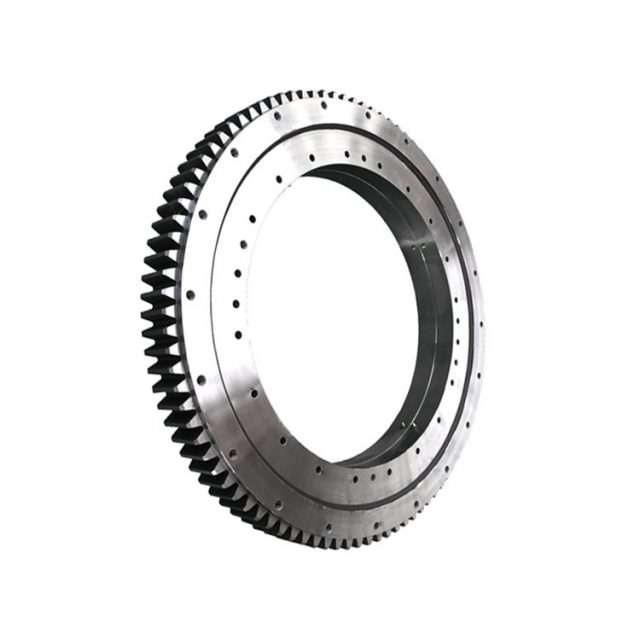
2. How to use the slewing bearing of the pile extractor
The slewing ring of the pile extractor is similar to the use method of the pile driver and the excavator. The slewing bearing is a force transmission element for the relative slewing motion of the upper body and the lower body, which is used to support the mass of the upper body and bear the working load.
The inner race is connected to the lower body, the outer race is connected to the upper body, and the inner gear on the inner race is engaged with the rotary motor pinion. When the slewing motor rotates, the upper body is driven to rotate through the pinion. The slewing ring of the pile extractor uses an internal tooth slewing ring. Because of the impact load, the tooth surface is generally quenched.
It is common for pile extractors to extract piles by vibration. During operation, the vibration pile extractor is fixed on the pile head, suspended under the hook through the spring vibration absorber and rigging, and the pile extractor is started, and the vibration generated by the vibrator is generated. , causing the pile and the soil to resonate, the soil structure is damaged, the friction between the pile and the soil is reduced, and the rigging is tightened to gradually pull out the pile.
If an eccentric block vibrator is used, the eccentric block must be adjusted due to the different resistance directions of pile driving and pile pulling. This kind of pile pulling equipment has the advantages of simple structure, high pile pulling efficiency and promising development.
The hydraulic pile puller uses its pile clamp to clamp the pile head, and the hydraulic cylinder forcibly presses the pile clamp to lift it upward for a certain distance, and pulls out the pile section by section. It is suitable for clay, sandy soil or soil containing a small amount of gravel.
Pull out I-beam or section steel piles in the layer. There is also a mechanical method of pulling the pile, that is, the hoist is driven by the motor, and the pile is forcibly pulled out of the ground by the pulling force of the wire rope pulley. It is easy to use and low in cost, but the pile pulling force is not large, the equipment is cumbersome, and the pile pulling efficiency is low.
It is only suitable for construction in soft soil. Use the double-acting steam hammer to pull out the pile. The hammer body is inverted, fixed on the pile head, and suspended under the rigging. First, shake the pile head in the soil to reduce the tightness between the pile and the soil, and then start the steam hammer to hammer upward. Vibrate, tighten the rigging, and gradually pull out the pile, which can pull concrete piles and other piles in various soil layers.
2.Strengthen the use effect of slewing ring from 3 aspects
1. During the use of the machine, we should add lubricating oil to the bearing in time, because the excessive operation of the bearing can easily lead to a large number of wear problems. Dropping lubricating oil every two to three hours can reduce this problem. friction damage.
2. The slewing bearing is a component with a high reimbursement rate in the whole machine, so when we buy the corresponding machine, we should pay attention to adding a few spare parts when purchasing the bearing, and the material of the spare bearing should also be selected well Otherwise, the bearing will be eliminated soon after use, or the performance of the machine will not be evaporated.
3. The machine should be cleaned every month. At this time, don’t pay attention to dismantling the bearing for cleaning, and clear the large amount of oil or other dirt attached to the bearing, so as to make the whole bearing work effectively. be improved.
In addition, it should be noted that the bolt pre-tightening force should be checked after the slewing ring has been operated for 100 hours, and every 500 hours of operation in the future, sufficient pre-tightening force must be maintained.
In use, it is forbidden to directly wash the slewing ring with water to prevent water from entering the raceway, and strictly prevent hard foreign objects from approaching or entering the tooth meshing area. Check the integrity of the seal frequently. If the seal ring is found to be damaged, it should be replaced in time, and if it is found to fall off, it should be reset in time. In the process of use, grease should be added regularly.
Generally, ball slewing bearings should be refueled every 100 hours of operation, and roller slewing bearings should be refueled every 50 hours. In special working environments, such as high temperature, high humidity, and dust , When the temperature changes greatly and when working continuously, the lubrication cycle should be shortened. When injecting grease, turn the turntable bearing slowly so that the grease is filled evenly. For slewing bearings with internal teeth or external teeth, the debris should be removed frequently and the corresponding grease should be applied.

